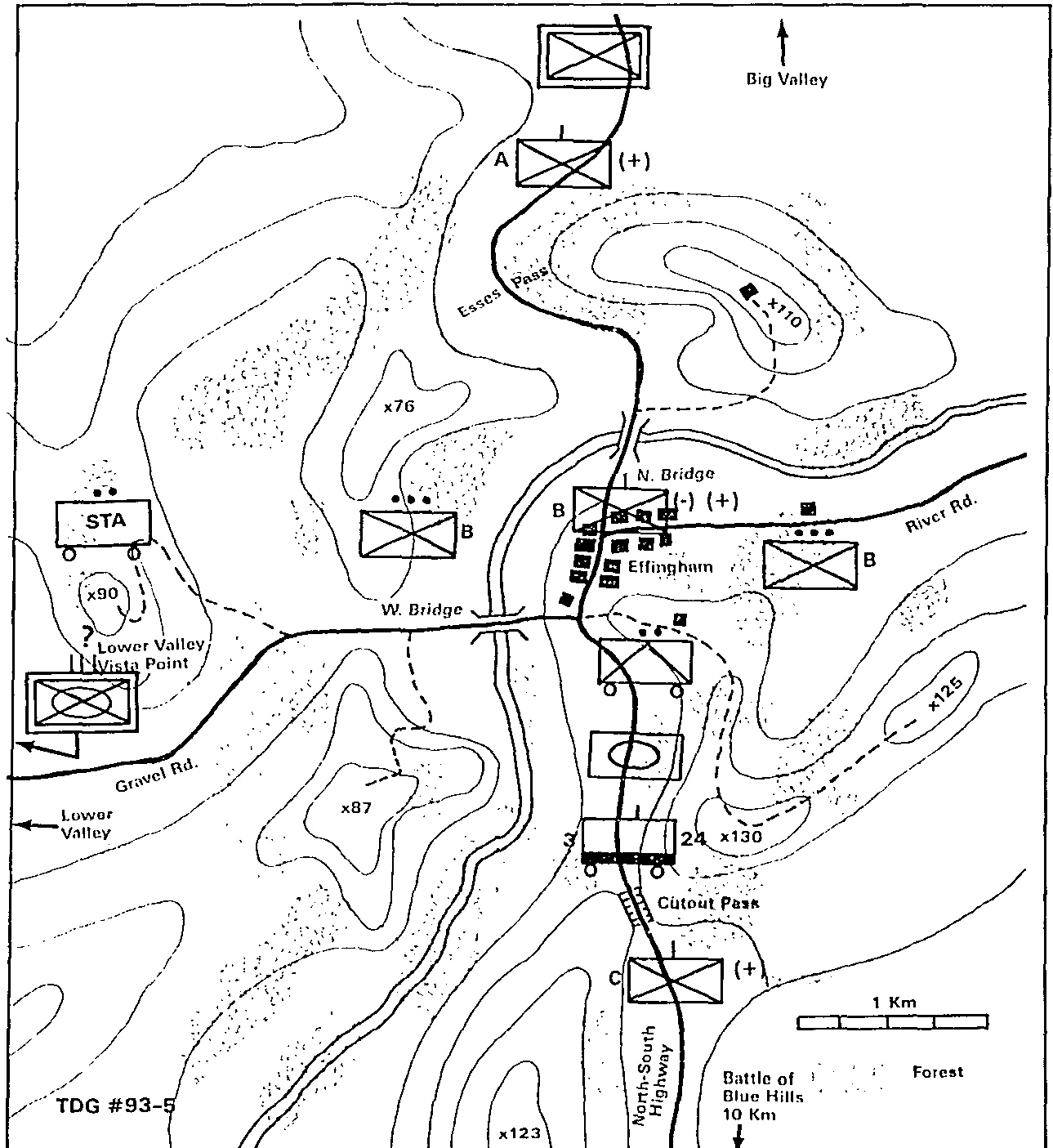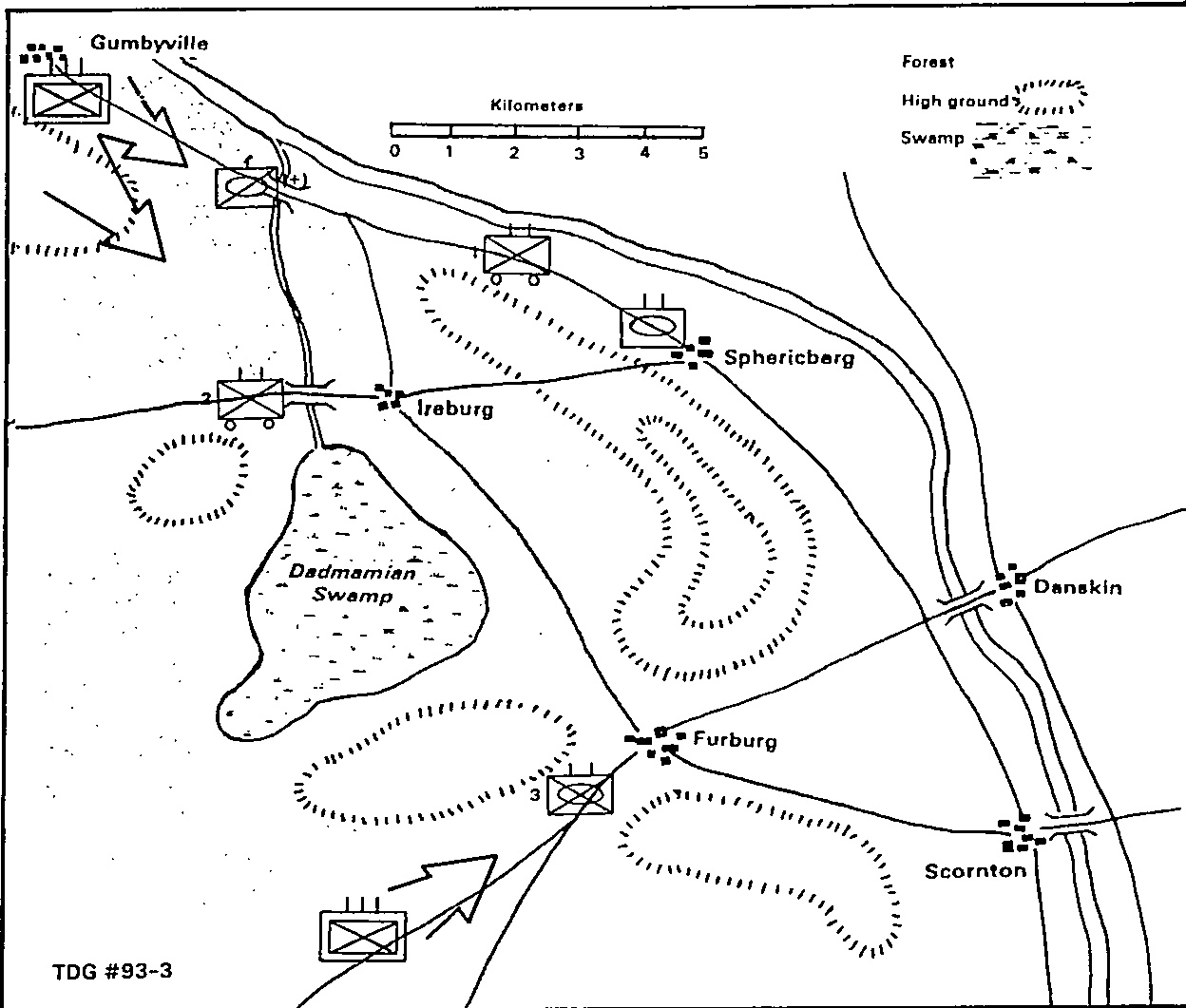Situation
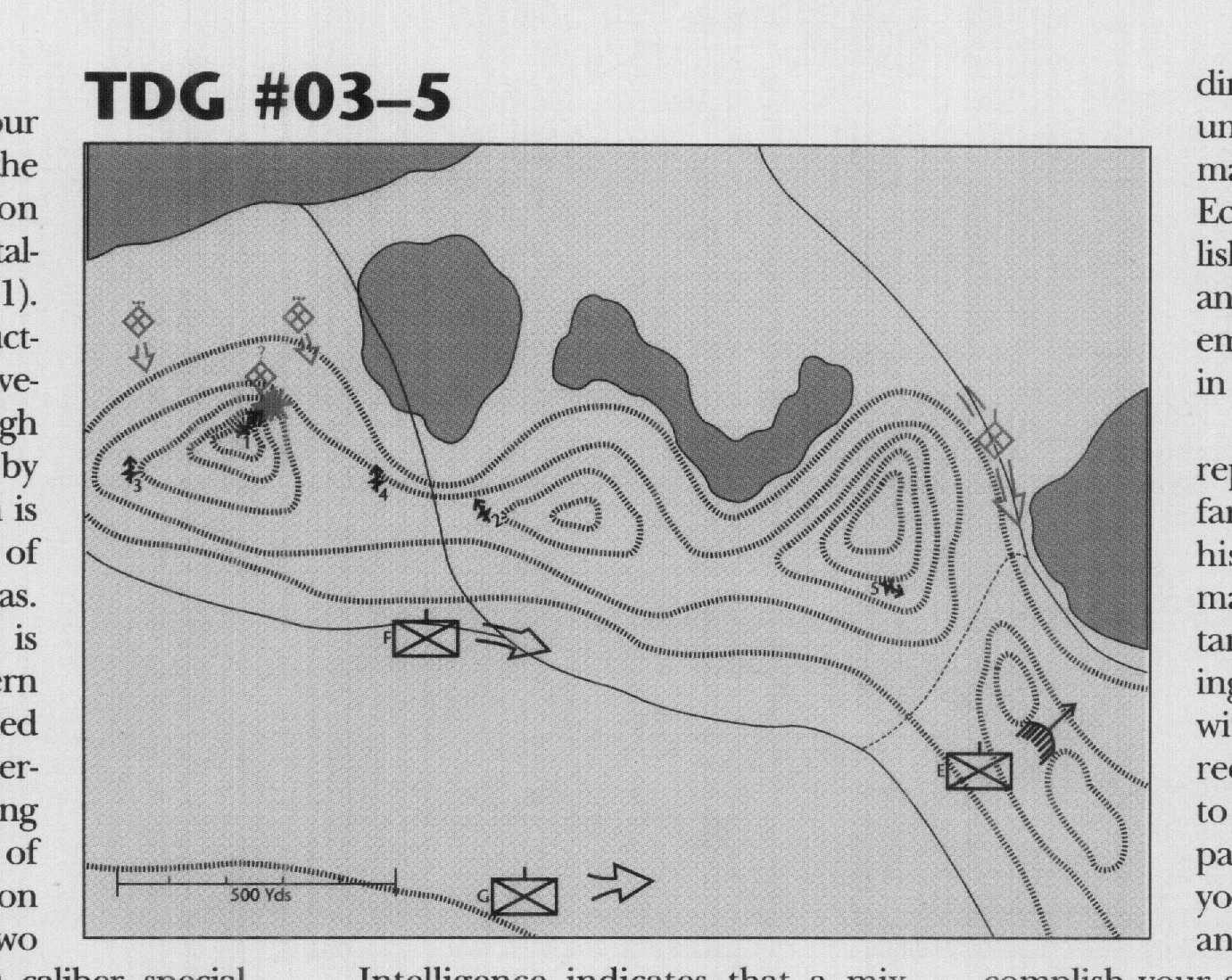 It is 1730 and 1 hour until sunset. You are the Scout/Sniper Platoon Commander, 2d Battalion, 1st Marines (2/1). Your battalion is conducting a dismounted movement to contact through an open valley flanked by low ridges. The terrain is rolling with a mixture of wooded and open areas. Scout/sniper platoon is screening 2/1’s northern flank and has established a series of indepth observation posts overlooking the most likely avenues of approach. Your platoon is task organized into two three-man M82A3 .50 caliber special application scoped rifle (SASR) teams and three two-man M40A3 sniper teams that are depicted on the map. You are collocated with Hunter 2. All teams are in good communications with each other and battalion.
It is 1730 and 1 hour until sunset. You are the Scout/Sniper Platoon Commander, 2d Battalion, 1st Marines (2/1). Your battalion is conducting a dismounted movement to contact through an open valley flanked by low ridges. The terrain is rolling with a mixture of wooded and open areas. Scout/sniper platoon is screening 2/1’s northern flank and has established a series of indepth observation posts overlooking the most likely avenues of approach. Your platoon is task organized into two three-man M82A3 .50 caliber special application scoped rifle (SASR) teams and three two-man M40A3 sniper teams that are depicted on the map. You are collocated with Hunter 2. All teams are in good communications with each other and battalion.
Intelligence indicates that a mixture of regular and irregular forces, estimated at battalion strength, occupy the area. These forces possess automatic weapons, mortars, and manportable air defense systems. This last element was a nasty surprise as two Cobras conducting armed reconnaissance were damaged yesterday.
The lead company commander (Echo Company) reports that he has reached the high ground overlooking the valley exit, made visual contact with the enemy, and has not been spotted. Traveling perpendicular to the battalion’s line of march on an unimproved dirt road, the enemy column consists of approximately 80 to 90 infantry. Echo Company is establishing a hasty far ambush and estimates that the enemy will be in his kill zone in 10 minutes.
Just then Hunter 3 reports a platoon of infantry advancing toward his position, approximately 300 meters distant. Hunter 3 is requesting mortar fire to deal with this threat. His fire request has been denied to facilitate Echo Company’s ambush. Just as you are analyzing time and space factors to accomplish your screen mission in light of the enemy proximity to the ridge, the silence is shattered by rapid fire from Hunter l’s M82A3 SASR and M249 squad automatic weapon (SAW). “Infantry, technicals, 100 yards my pos . breaking contact now!” Simultaneously, Hunter 4 reports approximately 30 to 40 men approaching their position from the northwest, 300 yards away.
So much for Echo’s ambush. What now, Lieutenant?
Requirement
In a time limit of 5 minutes, detail the orders you give to your platoon and your report to battalion. Provide the rationale for your decisions and a sketch of the plan. Submit your solution to Marine Corps Gazette, TDG #03-5, P.O. Box 1775, Quantico, VA 22134, fax 703-630-9147, or e-mail <[email protected]>.
Scout/Sniper Platoon
Task organization
Hunter 1
SASR Team (3 Marines)
1 x M82A3 special application scoped rifle
1 x M249 SAW
1 x M16A2 rifle
Hunter 2
SASR Team (3 Marines)
1 x M82A3 special application scoped rifle
1 x M249 SAW
1 x M 1 6A2 rifle
Hunter 3
M40A3 Team (2 Marines)
1 x M40A3 sniper rifle
1 x M16A2/M203 rifle
Hunter 4
M40A3 Team (2 Marines)
1 x M40A3 sniper rifle
1 x M16A2/M203 rifle
Hunter 5
M40A3 Team (2 Marines)
1 x M40A3 sniper rifle
1 x M I 6A2/M203 rifle
Scout/Sniper Platoon Weapons
The M82A3 SASR is a .50 caliber semiautomatic, magazine fed, shoulder fired weapon equipped with a 10-power scope. The weapon has a maximum effective range of 2,000 yards against vehicle-sized targets. Due to its lack of minute of angle capability, it is not a sniper rifle and considered inaccurate against man-sized targets beyond 600 yards.
The M40A3 sniper rifle is a 7.62mm bolt action, magazine fed, shoulder fired weapon capable of minute of angle accuracy. Coupled with a 10-power scope, the weapon has a maximum effective range against personnel to 1,000 yards.


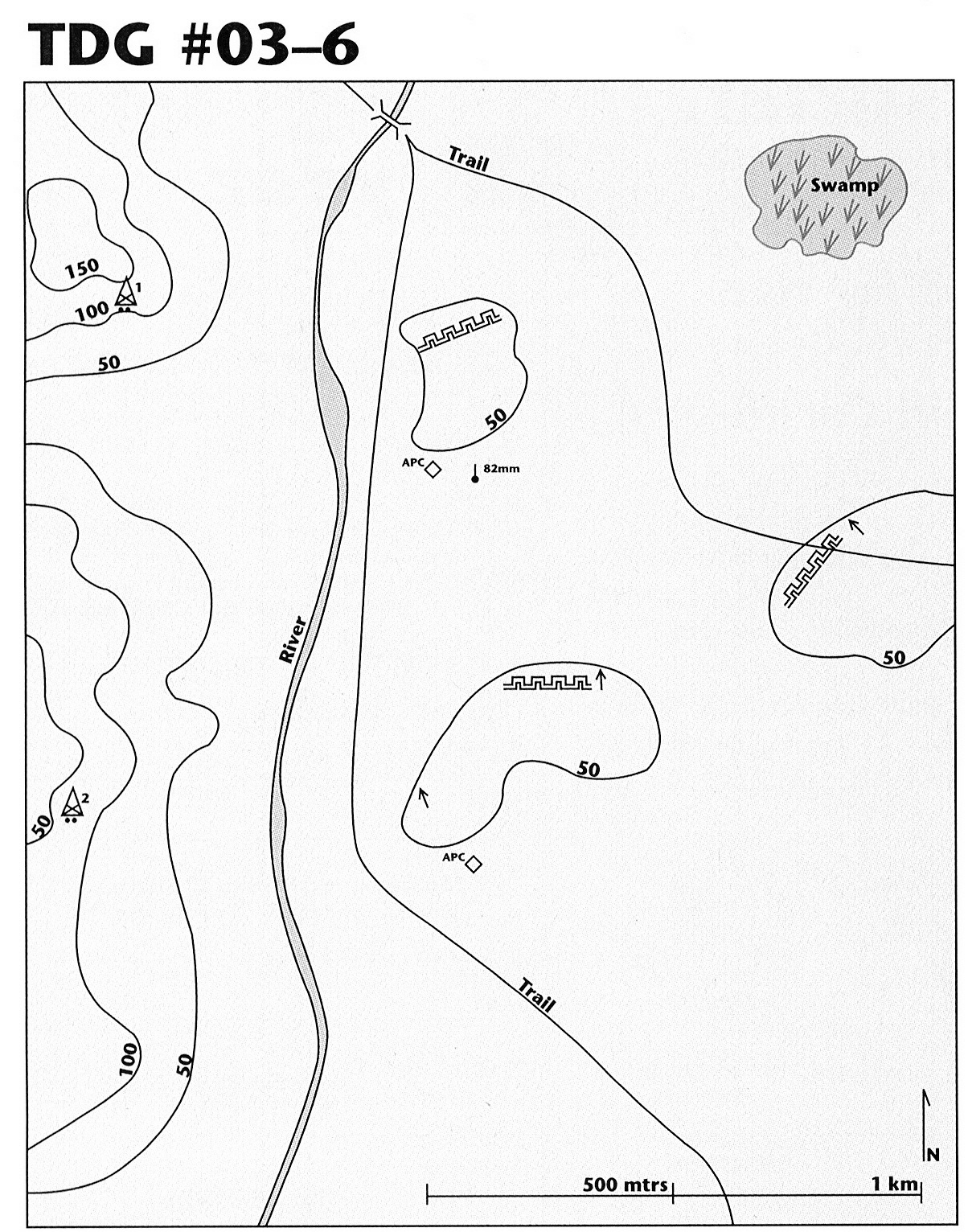
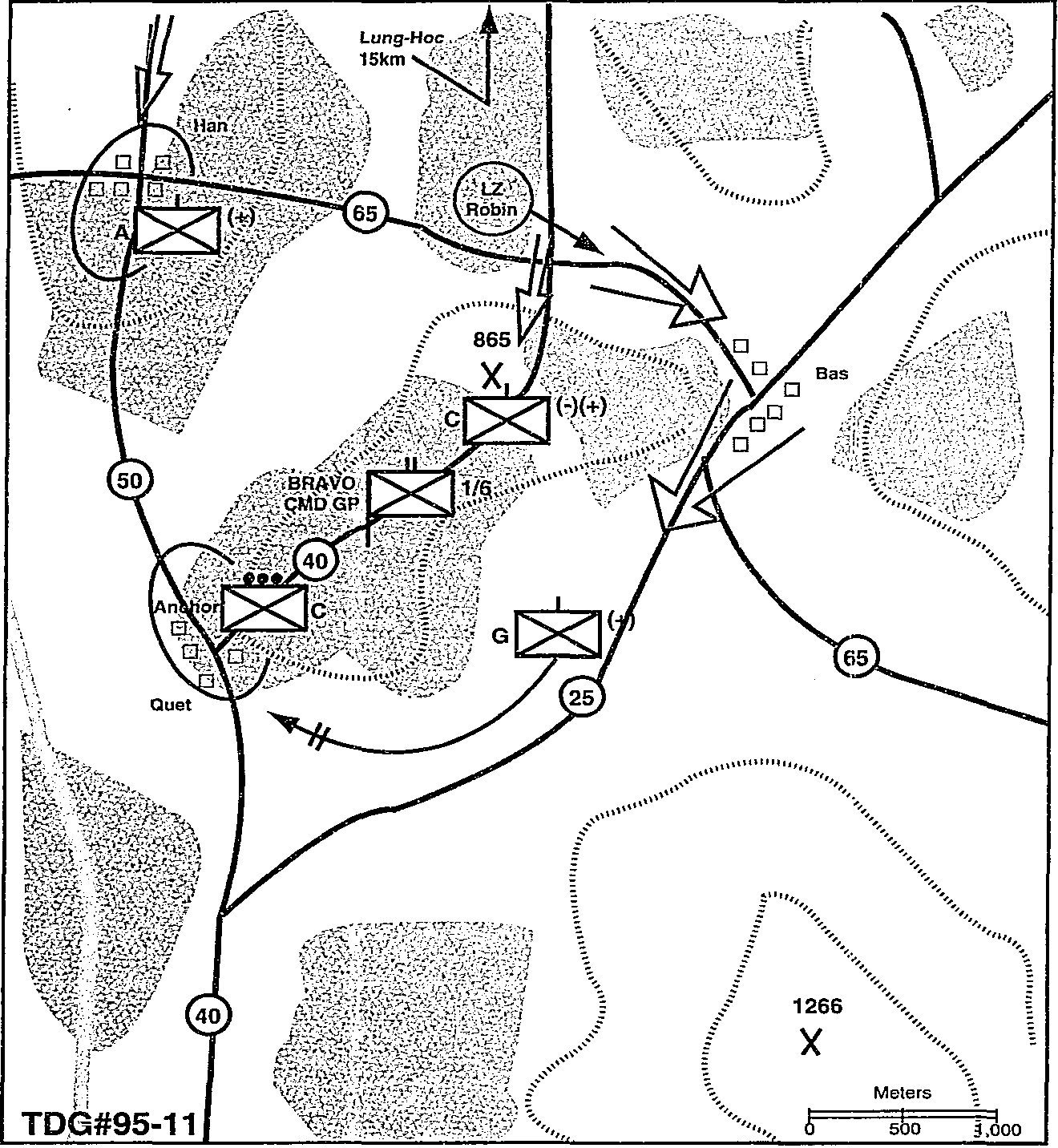
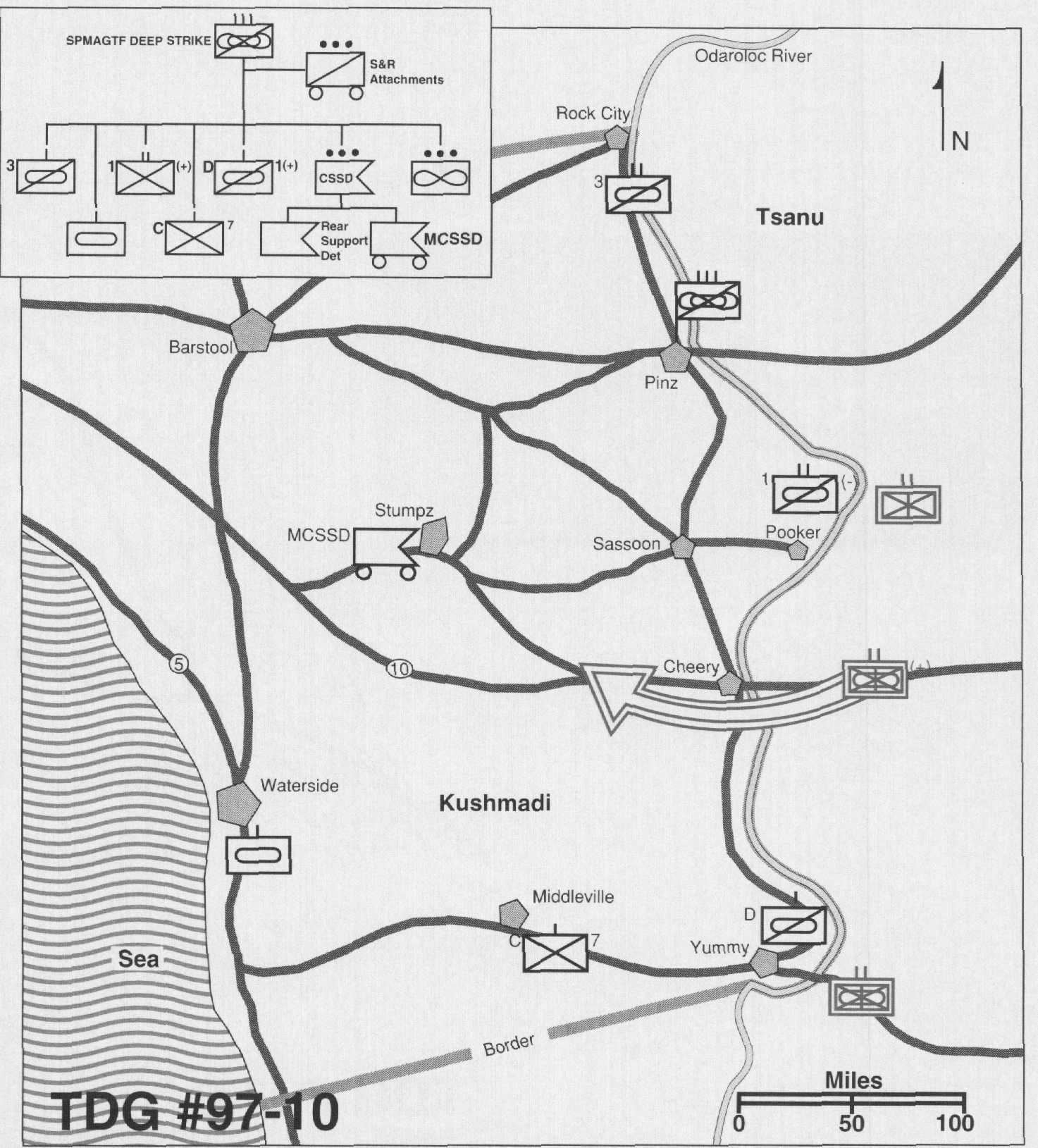
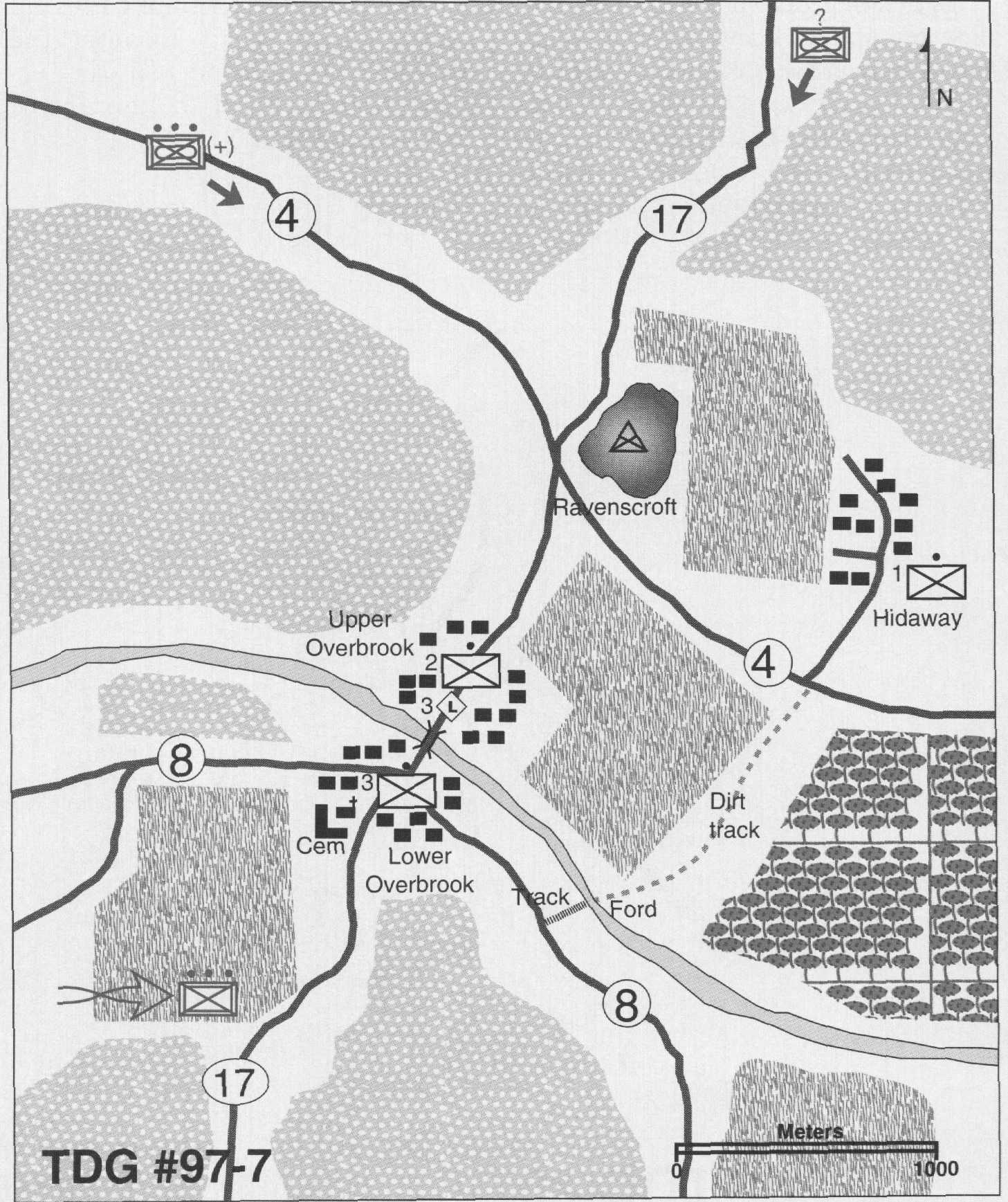
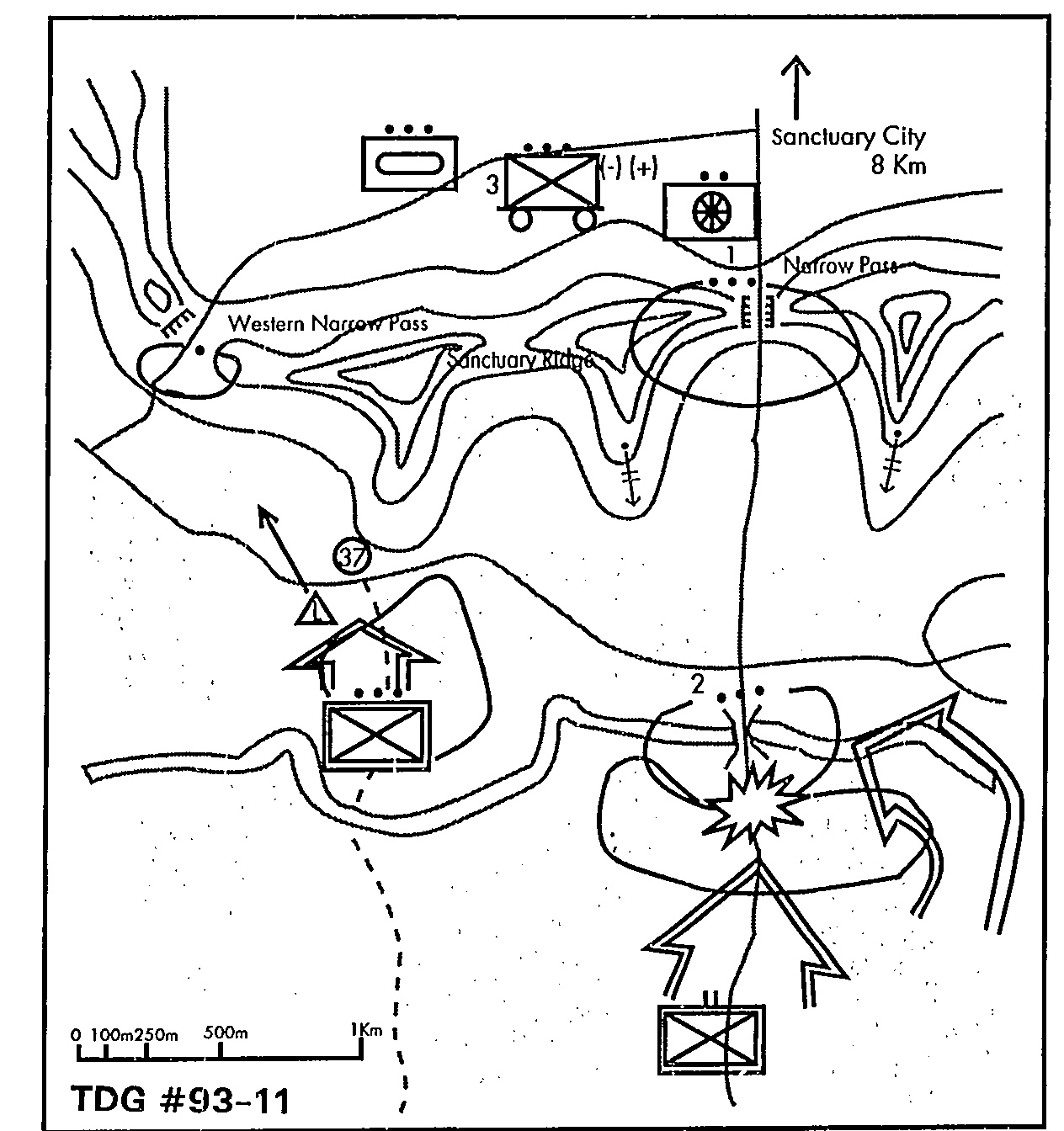
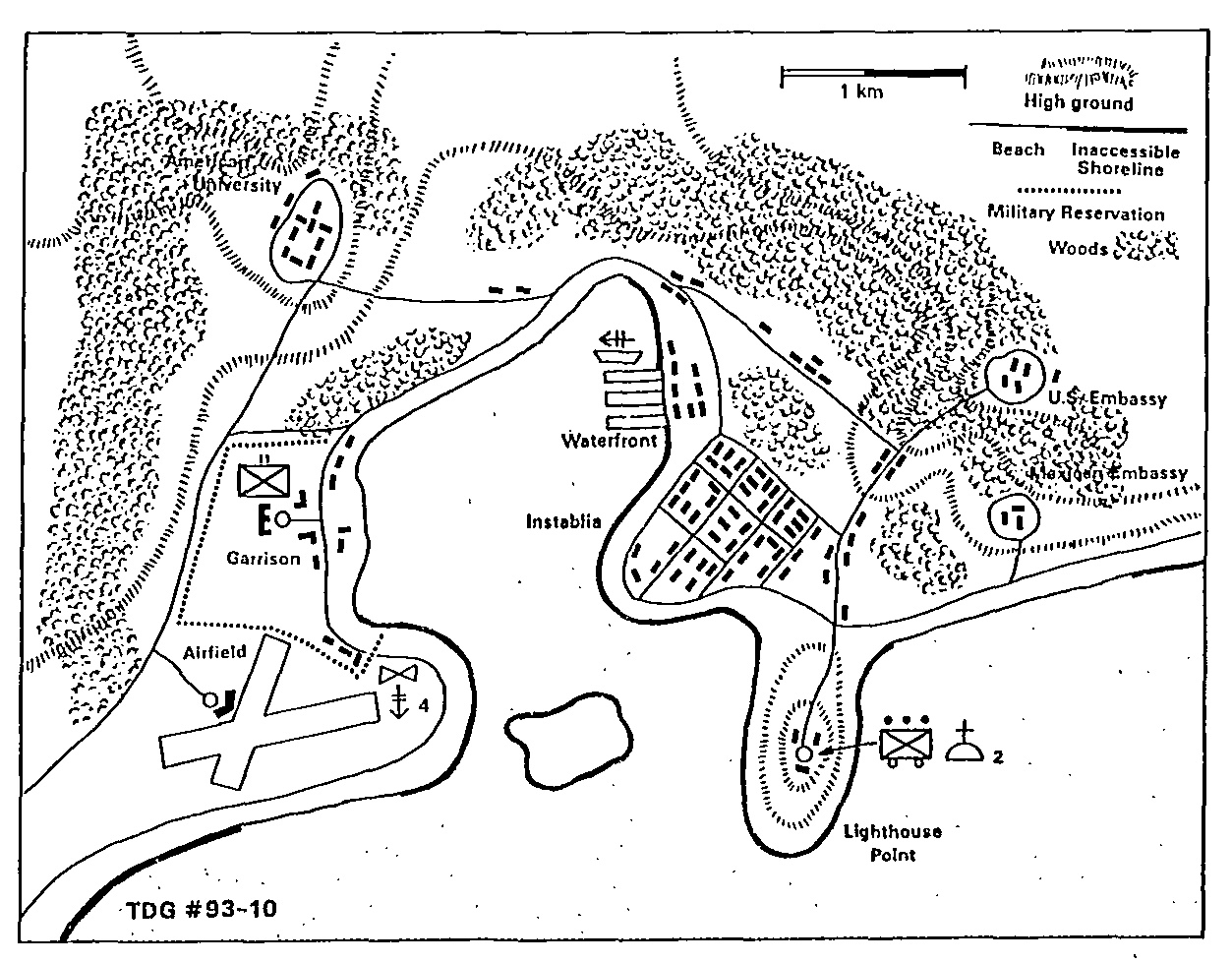
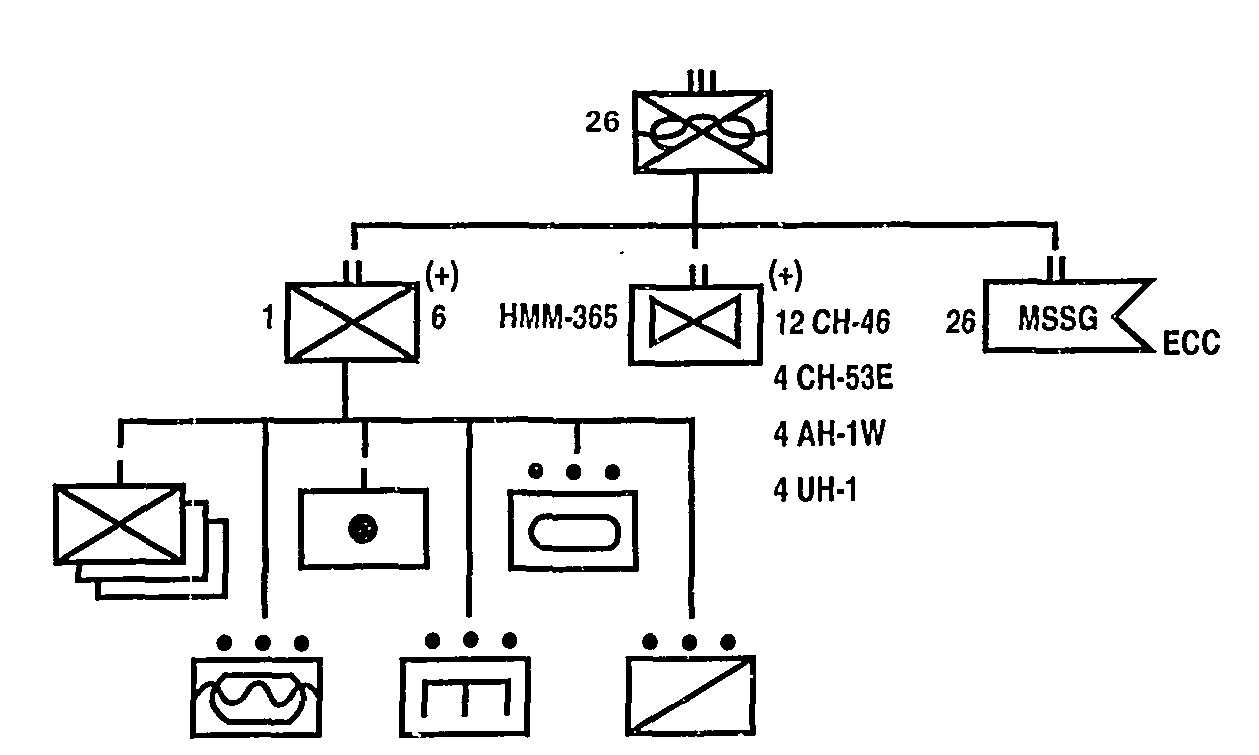 Develop your evacuation plan. It is not necessary to write a complete operations order, but describe your concept of operations, tasks or phases, contingency plans, and coordinating instructions. Provide a sketch of your plan and a brief explanation. Send your solution to Marine Corps Gazette, TDG 93-10, P. O. Box 1775, Quantico. VA 22134.
Develop your evacuation plan. It is not necessary to write a complete operations order, but describe your concept of operations, tasks or phases, contingency plans, and coordinating instructions. Provide a sketch of your plan and a brief explanation. Send your solution to Marine Corps Gazette, TDG 93-10, P. O. Box 1775, Quantico. VA 22134.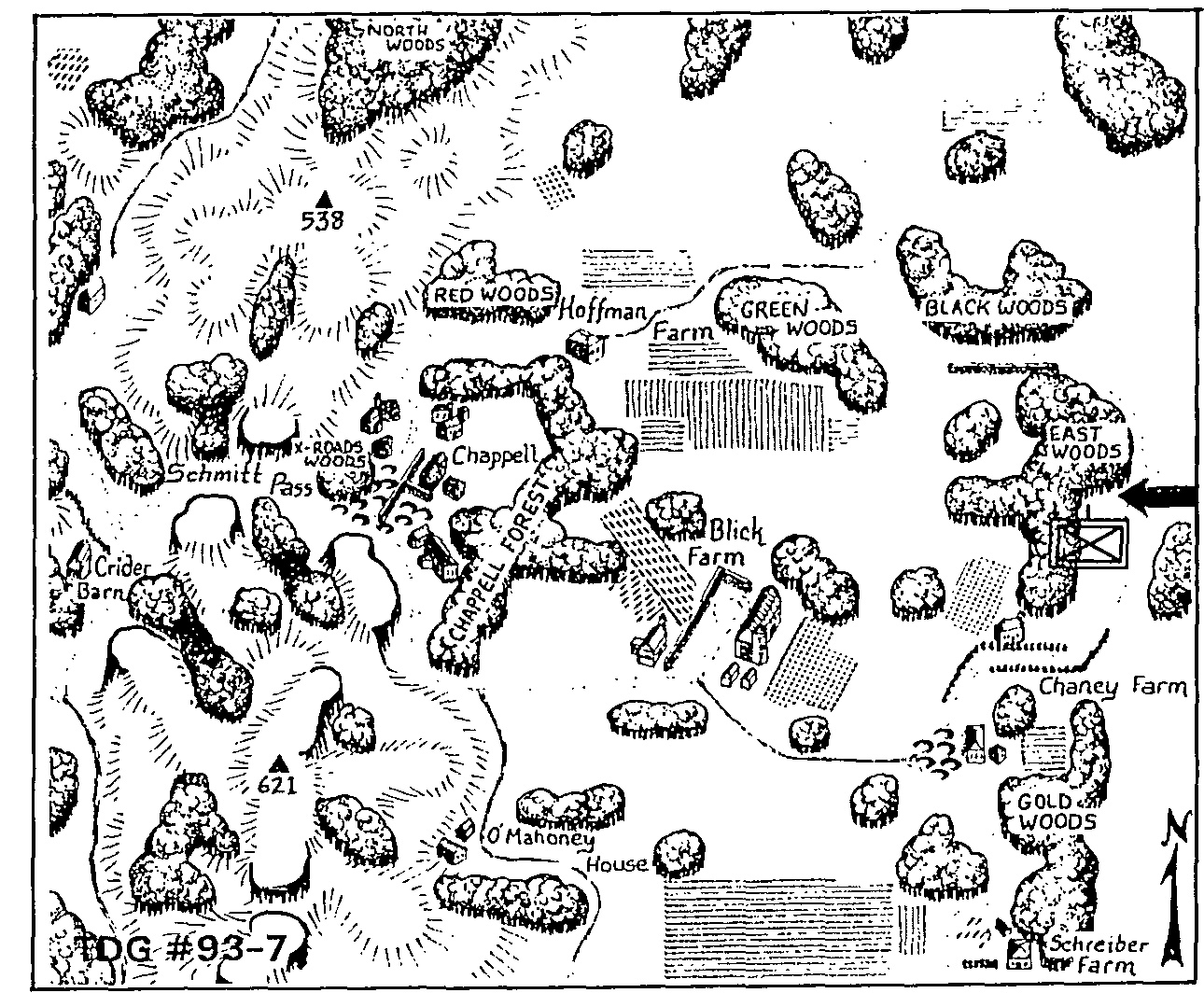
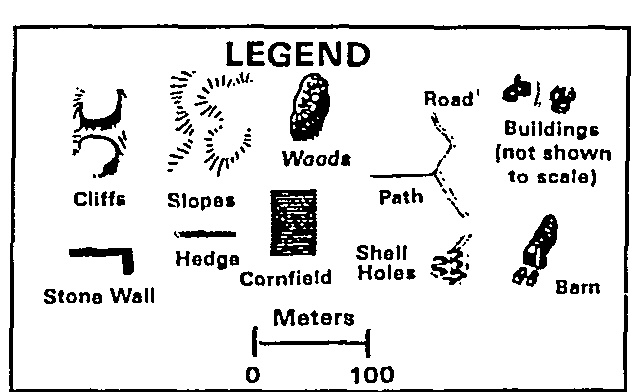 In a time limit
In a time limit 